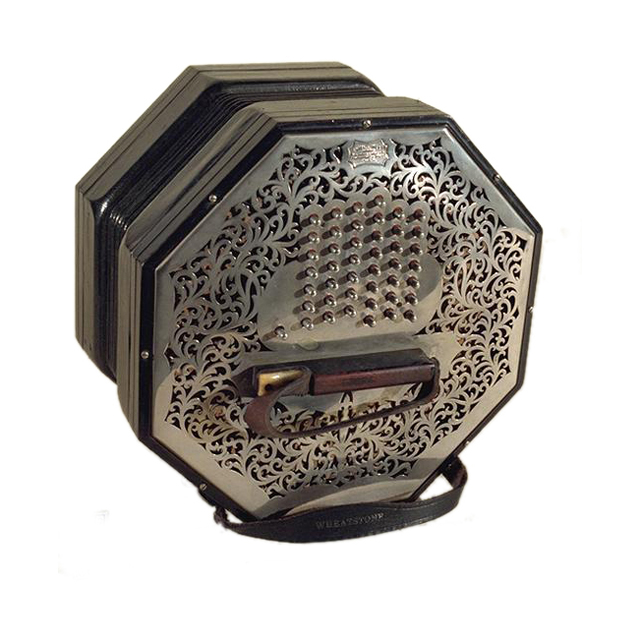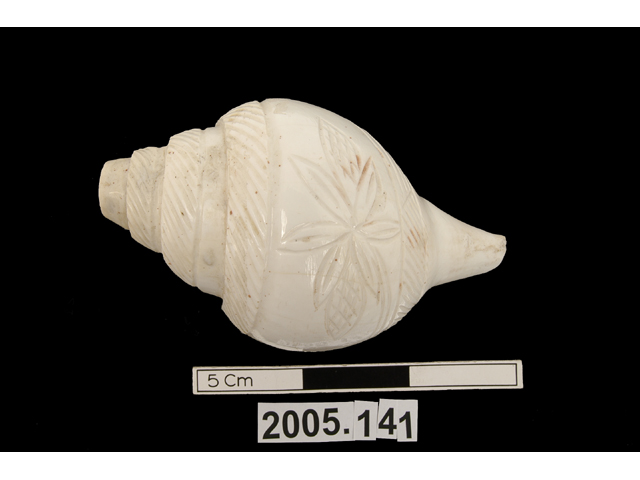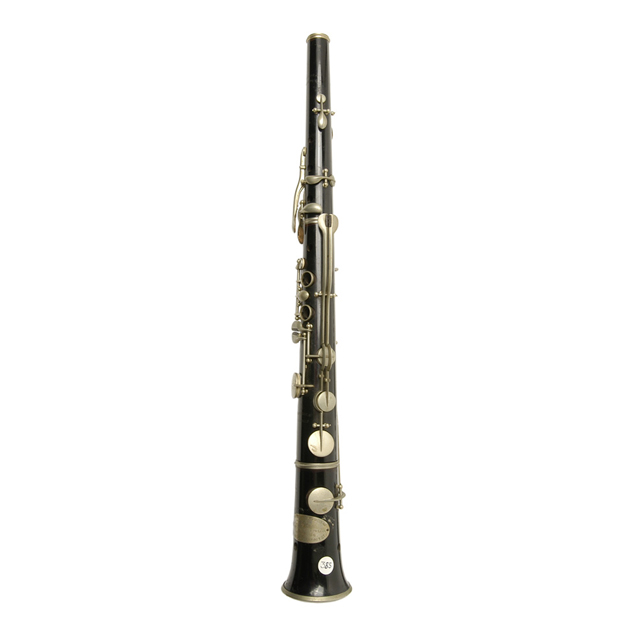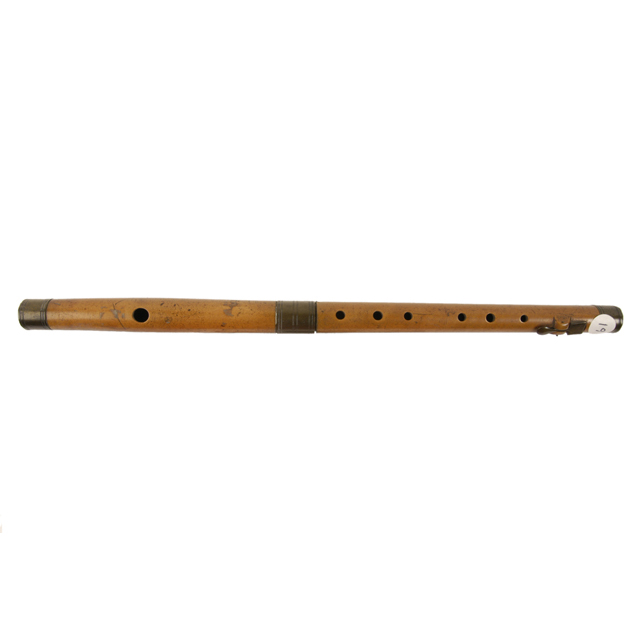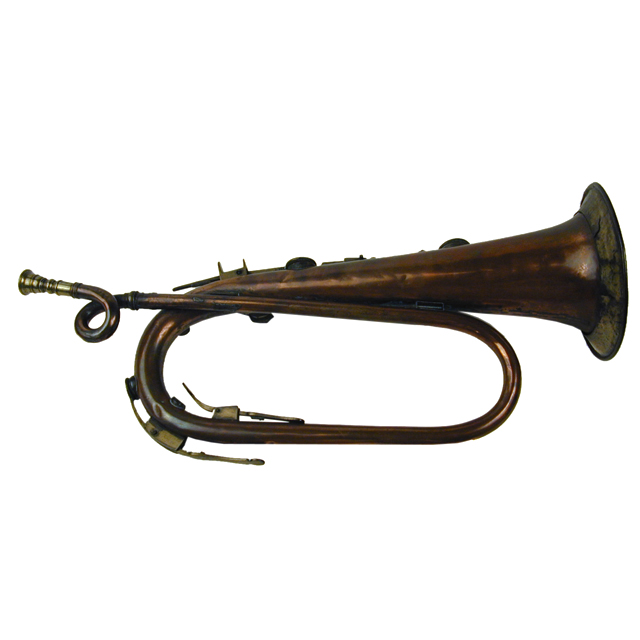
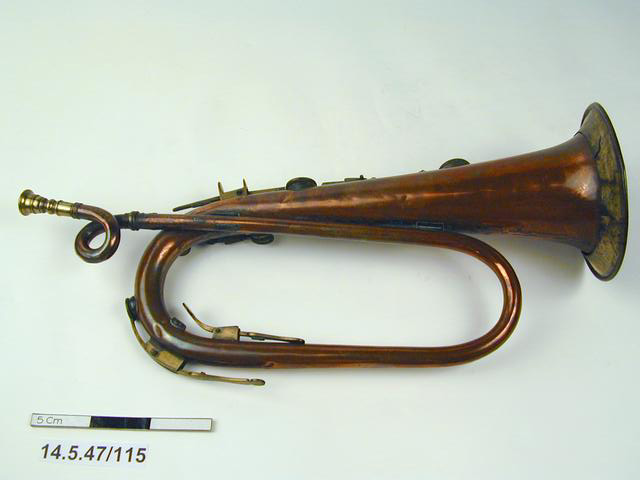
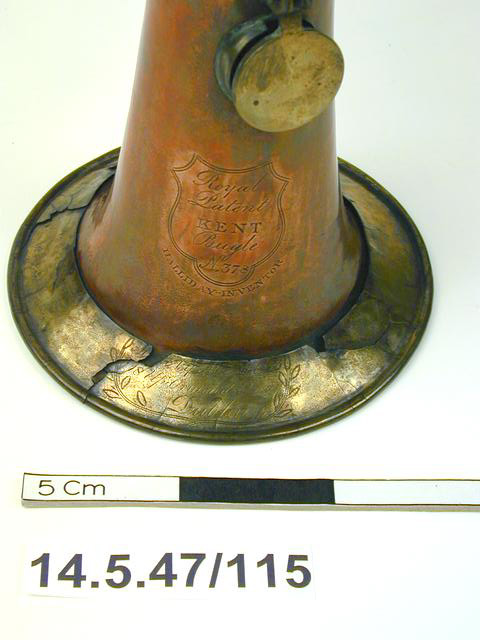
Keyed bugle, copper body, brass keys, brass bell garland. Seven flat keys. Circular looped copper crook. Mouthpiece contemporary. Some soldering of damage to mouth-pipe. Bell garland parting from body. Body dented in at finger bridge. Bell garland plain and inscribed: M. Holles 18 Upr. Ormond Quay, Dublin. Royal Patent Kent Bugle No.378. Halliday inventor.
The keyed bugle was very important to the development of brass bands. Keys allowed it to play chromatically decades before valves came into regular use. It could play soprano parts usually covered by clarinets, heralding bands made up entirely of brass instruments. The keyed bugle is a highly flexible instrument. Its conical mouthpiece and bore produce a mellow sound similar to the modern flugelhorn. The holes covered by the keys affect the tone, making some notes sound stronger than others.




